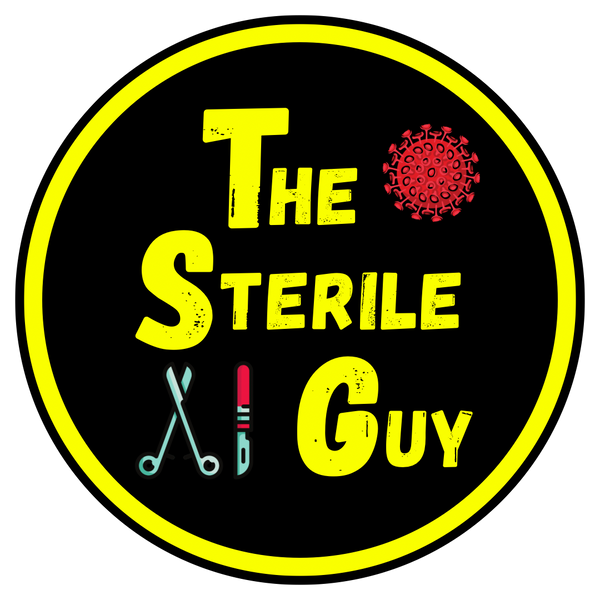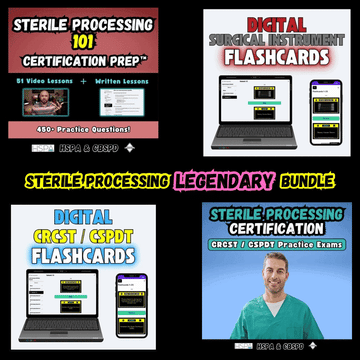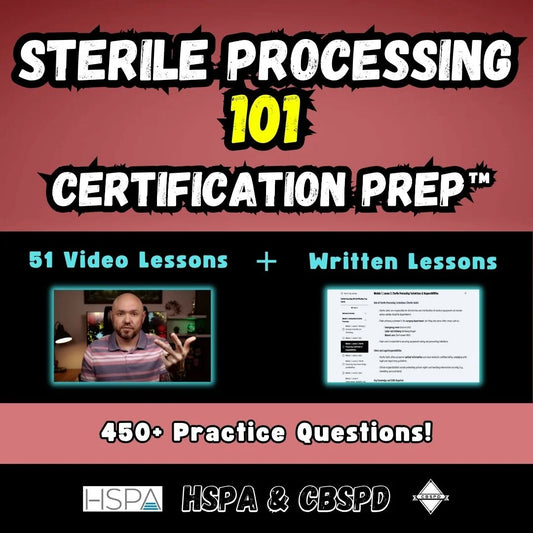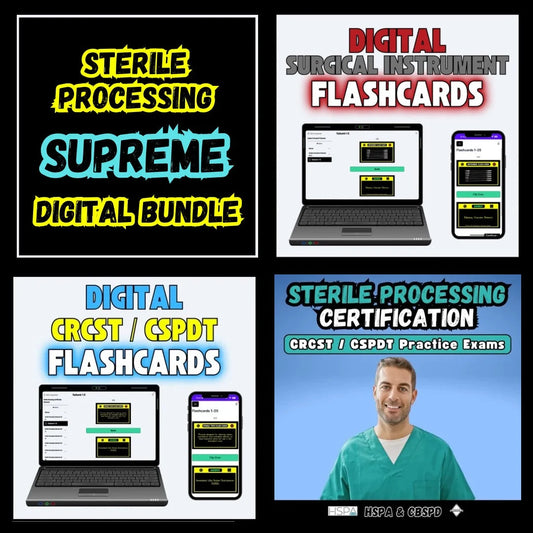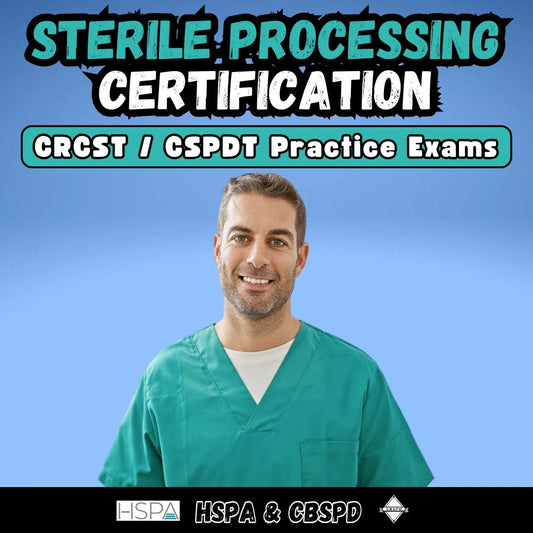Sterile Processing Technician Education & Training
How long does it take to become a Sterile Processing Technician?
Becoming a Sterile Processing Technician (SPT) can vary widely depending on your education path, training opportunities, and how much time you can dedicate. Here's a quick breakdown:
🎓 1. Formal In-Person Education: Not required, but highly recommended
You don’t have to attend a formal program to pursue a career in sterile processing—but doing so could increase your ability to get hired.
- You’ll gain foundational knowledge in sterilization principles, instrument processing, infection prevention, and more.
- Employers often expect candidates to be familiar with central sterile supply concepts and best practices.
The downsides? Formal education is expensive and time consuming. Your life also needs to revolve around the schools scheduled program.
🏥 2. On-the-Job Training: Possible, but opportunities are shrinking
Some healthcare facilities still offer in-house training, allowing you to start working with minimal prior experience.
- If you're fortunate enough to find such a position, you could begin immediately.
- But be warned: these openings are dwindling, and most employers now prefer or require some type of formal training or certification.
💻 3. Online Accredited Training via Preppy
A 100% online, self-paced option with university accreditation.
- Hybrid timeframe: 4–6 months, depending on your pace.
- Includes externship, resume support, career platform access, and a path to national certification (CRCST).
- Affiliate link to Preppy: steriletechniciantraining.com
If you’re aiming for a recognized certificate and flexibility, this is a powerful option.
📚 4. Sterile Processing 101 Certification Prep Course (by Brandon “The Sterile Guy”)
A streamlined, cost-effective prep course designed to accelerate exam readiness.
- Timeframe: 1–2 months.
- Includes 15 modules, 53 video lessons, over 450 practice questions, quizzes, a full certification mock exam, easy access via app and free Surgical Instrument eBook.
- Perfect whether you already know the basics and want to get certified quickly, or you’re just starting out and wanting to learn the field of Sterile Processing.
⏳ 5. Comparison Summary
|
Route |
Time to Completion |
Features |
|
On-the-job training |
Immediate start (if available) |
No prep; good for those who land a spot—but rare! |
|
Preppy (accredited) |
4–6 months |
University-backed, includes certification exam prep, externship, career support |
|
Sterile Processing 101 |
1–2 months |
Intensive mock exams, video modules, aligned with HSPA standards |
⚠️ 6. Why training matters
- Without any training, knowledge, or experience, your chances of passing an interview drop drastically.
- Hiring managers typically expect at least a foundational understanding of aseptic technique, hospital protocols, and sterilization procedures—even for entry-level roles.
- Training isn’t just résumé padding—it signals commitment, competence, and readiness.
✅ Final Thoughts
- On‑the‑job training: Quickest route, but rare and increasingly unavailable.
- Preppy’s accredited program: Best for recognized certification and structured learning (4–6 months).
- Sterile Processing 101: Fast, budget-friendly prep to pass certification (1–2 months).
- Untrained applicants: Poor prospects unless you quickly remedy the foundational gap.
Share
Let customers speak for us
from 241 reviewsI took the practice test and I got a 91% on my certification exam!!
This course was the extra boost that I needed in order be confident in passing the exam. Thank you for all the information provided. I even refer to your notes while working.
Very helpful to me I can study any where at my own pace and low cost than going to school...I'm glad that there is something like this online to help anyone who want to pursue their career as a sterile processing tech.
I loved it, it’s very informative and the questions are great, it’s a great resource to purchase if you want to prepare for your certification exam!
I’ve really enjoyed this course so far. It delivers the information in a straightforward, digestible way. The Sterile Guy has compiled a highly effective program. Thanks very much from one highly satisfied customer!
The practice exams are detailed and easy to navigate. Brandon continues to show his passion in this industry by sharing his knowledge with up-and-coming techs. I also recommend investing in his flashcards. It has helped me greatly. Thank you, Brandon!,
These practice quizzes really helped me get the hang of answering questions related to instruments and the processes of preparing them! I even bought them twice cause I ran out of time lol. Super helpful!
I recently completed the Sterile Processing Guy course online and was extremely impressed. The content was clear, well-organized, and easy to follow. It helped me better understand important concepts like decontamination, disinfection, and sterilization. I appreciated how practical and informative the lessons were, it definitely made studying for certification feel more manageable. I highly recommend this course to anyone pursuing a career in sterile processing!
I won’t lie, I failed the first time around. So I decided to buy this practice test and I passed with flying colors my second go. Highly recommend to anyone interested in the CER, it helped a lot!
The flash card quality is amazing! Bravo sir! The card quality is way above average, questions are great! I’m still learning, utilizing these cards and your practice tests. Thanks for all the info!
I passed the CRCST exam. Taking reg sterile guy practice test over and over definitely helped get the job done.
This certification prep course is a must. Great videos with a lot of information and plenty of of practice exams.
These flashcards are so helpful and well put together. Highly recommend!
I'm really happy that I purchased the SP practice exam. I love how if you answer the question incorrectly, the correct answer will include the page number of the text book to find the answer. The questions are literally based on the textbook. I suggested "The Sterile Processing Guy" to my friend that is studying for the exam as well.
